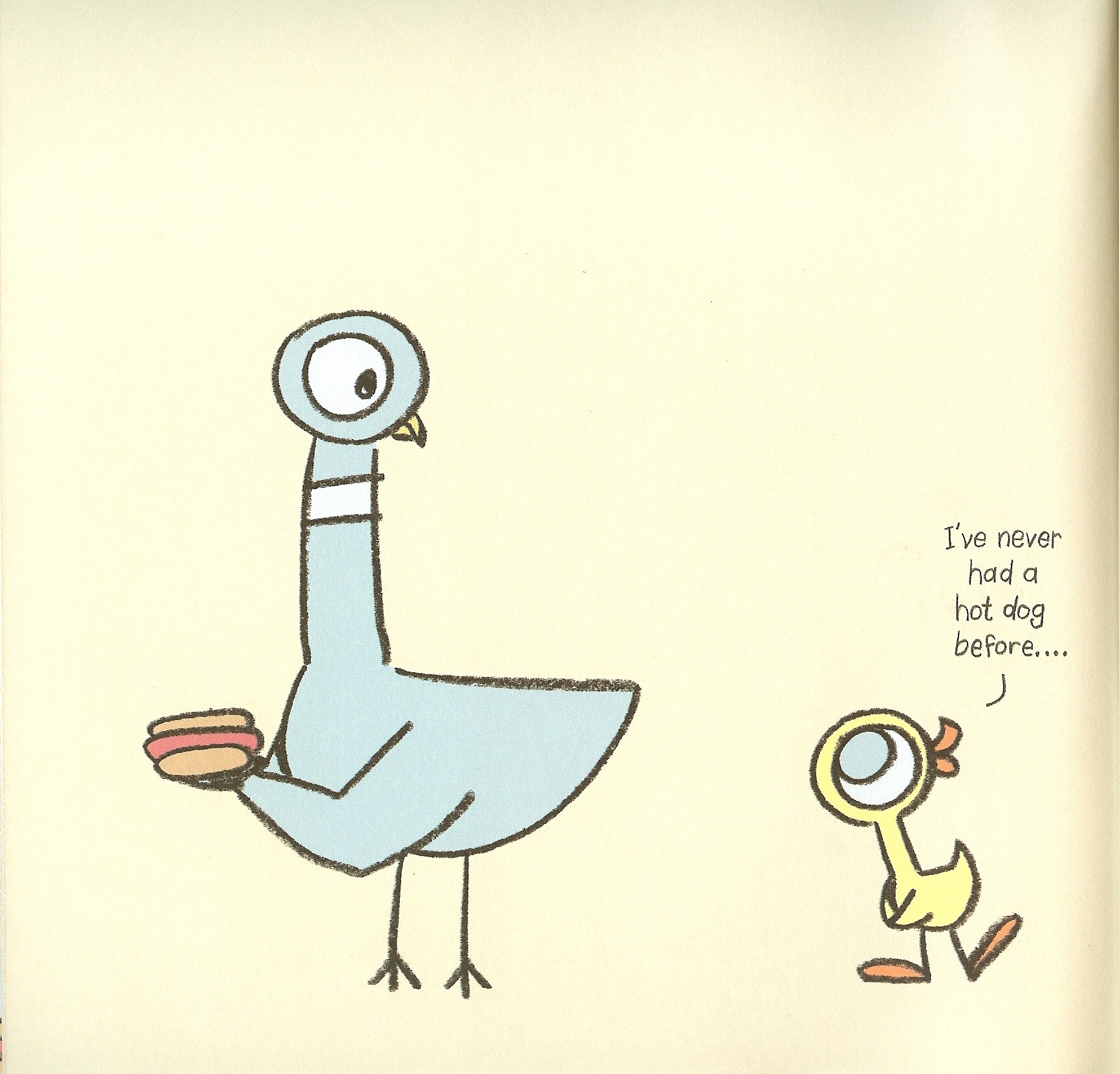Here’s the title character (and friend), from The Pigeon Finds a Hot Dog!, a terrific children’s book by Mo Willems.

There’s a series of these books: The Pigeon Wants a Puppy! Don’t Let the Pigeon Drive the Bus! And more.
As anyone can see, the pigeon and his friend owe a lot to modern art. They’re completely at home with the visual styles of our time, as are their readers, adults and children alike.
So here’s another disconnect between classical music and the outside world. Families love these pigeon books. But if the pigeon looked like a classical concert sounds…need I say more?
(And yes, I know that there’s modern music here and there on classical programs. But it’s hardly the norm, as the pigeon is in children’s book art.)

This one seems like a bit of a leap to me. Is this a suggestion that family concerts should focus on music that would easily entertain children? If so, that sounds like it would be nice but also extraordinarily difficult as I can’t think of much existing music that fits that niche.
On a side, I initially thought this was going to be a metaphorical post about how the classical world (the adult pigeon) makes it difficult for the average uninitiated person (the young pigeon) to get a taste for the music (the hot dog). Maybe because they think the young pigeon wouldn’t be able to properly enjoy it. Ah, yes, that would have been a stretch too though.
Well I agree 20th century art seems more at home in popular culture thand does 20th century music.
That said, you can hear a lot of minimalism in TV commercials these days if you listen. Because attention spans seem to be decreasing, TV commercials are shorter and more closely cut. The repetition and static harmonies of minimalist music don’t require a lot of time to unfold and do make a good fit in this environment.
Greg, if there were a classical concert that sounded like this pigeon looks, what would that concert sound like?
(I guess that’s just another way of asking what sort of thing you have in mind.)
Or if the pigeon looked like how a Superbowl plays? Or if the pigeon looked like the latest round of Middle East peace talks? Or if the pigeon looked like the lines to get into MoMA? Or if the pigeon looked like the Dubuque Gilbert & Sullivan Society’s latest production of the Mikado featuring Kitty Kettle, 14, in a stand out performance as Pitti Sing?
This seems to be quite a leap from a style of illustration in a children’s book to a damning indictment of the classical music world. The visual arts, at any rate, have generally always moved ahead of classical music.
I understand Josh’s criticism that this is a “bit of a leap”, but I think the larger point that Greg’s post makes is significant: modern visual art has clearly influenced the stylistic tendencies of an enormous range of widely consumed visual media (illustrations of children’s books!). Does this similar stylistic adoption occur in the musical arts? Not even close to the same degree.
Although this is likely due a wide variety of influences surrounding musical culture and education, the lack of contemporary relevance evident classical music programming is no doubt a contributing factor.
Citing Stockhausen’s influence on The Beatles is old hat, especially considering that it occurred over 40 years ago.
What is perhaps more interesting, is observing how involved contemporary pop musicians are in contemporary visual/media art: Kanye West’s collaboration with Takashi Murakami, or Will Cotton producing album artwork (and video art direction) for Katy Perry (Perry was actually the one who approached Cotton).
This type of collaboration—or at the very least, contemporary artistic awareness—rather ironically seems to be much more prevalent among popular musicians than among classical/academic circles. It’s almost as if the classical world has been focused on the past for so long that it simply cannot keep up (nor does it make any significant effort to).
http://www.newmusicbox.org/article.nmbx?id=6559
You might enjoy this article! 🙂